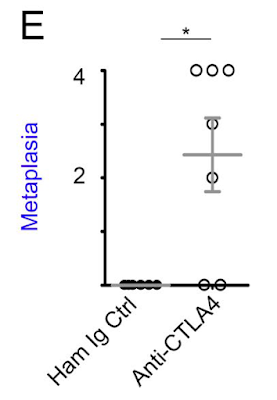Immune system protects against pathogens. In natural settings, live pathogens cause diseases. So, it is very intuitive to think that immune system could have developed a specialized way to detect pathogen's "live signature". Few years back, Julie Magarian Blander's lab (former postdoctoral scientist in Ruslan Medzhitov' lab) published study showing that mRNA from live bacteria served as "live signature" they called vita-PAMP.
Now, new paper in nature immunology from Leif Sander's lab (a former postdoctoral scientist in her lab and the first author of initial study) showed that in humans TLR8 may serve as a detector of vita-PAMP mRNA from live bacteria and augment antibody response. It is very nice study done primarily on ex vivo/in vitro human cells cultures (interestingly, Blander's lab also published this month new study about vita-PAMPs in mice in journal Immunity. But it is very messy and bloated study. Basically, in this case pupil outdid his [former] master).
Here the authors showed that live, replication-defective E. coli strain but not heat-inactivated dead one, could induce differentiation of human follicular helper T cells (TFH cells).
These TFH cells were functionally active inducing antibody-secreting plasmablast generation from B cells.
Live bacteria, not dead one, specifically induced IL-12p70 generation from human monocytes (unlike mouse, differentiation of human TFH cells requires IL-12p70).
Indeed, antibody blockade confirmed a major role of IL-12p70 in generation of IL-21-producing human TFH cells.
Stimulation of human monocytes with various TLR agonists showed that engagement of TLR8 (single-strand RNA sensor) with its agonist ligand (CL075 or R848) were responsible for vita-PAMP effect on IL-12p70 production.
Similar vita-PAMP effect of TLR8 signaling were seen for human IL-21-producing TFH cell generation.
In summary, this study indicates that unlike LPS-derivative MPLA or CpG fortified vaccines, inclusion of TLR8 agonists, such as CL075, could augment antibody responses. While study is well done we need to keep in mind that it is produced by members of the 'same initial' group (Blander and Sander) who first reported vita-PAMP effect. We don't have analogous studies from other labs who can independently confirm these observations.
posted by David Usharauli
These TFH cells were functionally active inducing antibody-secreting plasmablast generation from B cells.
Live bacteria, not dead one, specifically induced IL-12p70 generation from human monocytes (unlike mouse, differentiation of human TFH cells requires IL-12p70).
Indeed, antibody blockade confirmed a major role of IL-12p70 in generation of IL-21-producing human TFH cells.
Stimulation of human monocytes with various TLR agonists showed that engagement of TLR8 (single-strand RNA sensor) with its agonist ligand (CL075 or R848) were responsible for vita-PAMP effect on IL-12p70 production.
Similar vita-PAMP effect of TLR8 signaling were seen for human IL-21-producing TFH cell generation.
In summary, this study indicates that unlike LPS-derivative MPLA or CpG fortified vaccines, inclusion of TLR8 agonists, such as CL075, could augment antibody responses. While study is well done we need to keep in mind that it is produced by members of the 'same initial' group (Blander and Sander) who first reported vita-PAMP effect. We don't have analogous studies from other labs who can independently confirm these observations.
posted by David Usharauli























